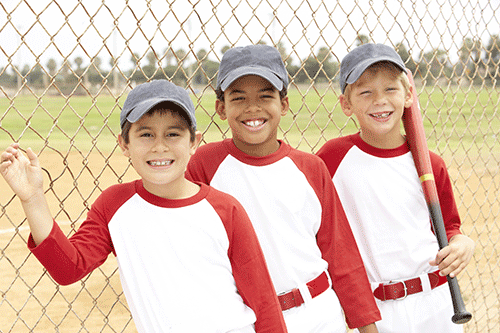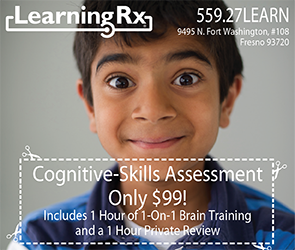Finding the Right Sport

By Mali Anderson
We all want our kids to be healthy and part of staying fit is staying active. Sports are a great way to keep kids moving while building social bonds and building self-confidence. If you were outgoing and loved soccer as a child, that may be your go-to choice for your daughter, but maybe she is more interested in swimming or tennis, which sport do you choose?
“A great way parents can choose a sport for their child is to have their child choose it themselves. Parents who provide a tasting of lots of different sports will help their child narrow down their choices and choose one that is right for them. Getting over fears of failure and gaining confidence is the greatest challenge in helping children find a sport they like.” recommends Anastasia Gavala, a family life teacher and mother of five children.
Choosing a Sport
To ensure your child will excel in sports, be sure to take any physical limitations in consideration. Ask at your next checkup if there are any physical outlets might be inappropriate.
Once you feel they are developmentally ready, there are a few things to watch for. Assess what they are playing on their own, making a sport choice that is an extension of your child’s interests increases the chances of the sport being fun and rewarding.
If you are worried your child is too small to start a sport, keep in mind there are more kid tailored sports now than ever. For instance, the United States Tennis Association (USTA) has encouraged parents to introduce children to tennis through half-sized courts, smaller racquets and slower balls. The adjusted courts, called 10 and under tennis, have grown in popularity and allow kids to approach the game as an extension of their own play.
“10 and under tennis is a global movement. More and more clubs have smaller courts, shorter racquets and balls that don’t bounce as high for kids,” says Timon Corwin, the director of tennis at Western Racquet Club.
Cost of Sports
Lessons, equipment and athletic shoes can be expensive. Before balking at the cost, remember a child can experiment with a sport before a family needs to invest in traveling to tournaments or purchasing the latest high-tech fabrics.
Corwin recommends teaching young children hand and eye coordination through rolling a ball back and forth. Or get out in the driveway with a couple of inexpensive racquets, even ping pong paddles will do, and hit a ball around. Even without a net, a young child is practicing skills for tennis. The same is true for a team sport like baseball. Kids can have a great experience with an inexpensive bat and a local community league. Save the money you’d have spent on elite clubs and lessons for if (or when, if you prefer) your child shows signs of heading to the major leagues.
Keeping this in mind, there are still sports that may be cost prohibitive. Instead of emptying your wallet on one sport, try a few with a lower price tag. Then your child can gravitate to what they prefer and you won’t be stuck with an unwieldy bill.
Not Naturally Sporty
Some children aren’t able to dive into competitions, but don’t rule out sports completely. Start with getting active—maybe a trampoline, bicycle or skateboard—to introduce motion and coordination.
Or switch from team sports to individual sports (or vice versa) until you find the activity that fits your child and your family.
“Our 11-year-old son has Aspergers and challenges in motor planning. He tried team sports but always seemed the odd man out, not really skilled and less assertive than other kids. Since then, we tried swimming and have since signed him up for year-round swim. It is an individual sport and it really is not about winning but instead about beating your last time. Swimming offers him more chances to be successful over and above any barriers that his challenges put in front of him,” says Jody Kulstad, a mother of three children, all of whom are active in a variety of sports.
A Participating Parent
As a parent involved with a sporty kid, chances are your schedule will be impacted, too. Making an effort to attend as many practices, games or matches as possible sends a positive message to your child that what they are doing is worthwhile. It also gives you insights to when your child will need a pep talk or advice. Sports are a known way to build self-confidence, but some of that resilience is built by picking up after a defeat. An encouraging parent can help. Remind your child that mistakes are simply opportunities for improvement.
20 Sports to Try
Often activities are split between individual sports—when athletes compete against their own skill set for success—and team sports—where athletes depend on their own abilities as well as the strength of their teammates to achieve a win. Being involved in sports, either individual or team, builds confidence. In addition, individual sports have been credited for teaching self-reliance, while team sports can be beneficial for developing leadership skills and creating lasting friendships. The short of it? Any sport is an asset, as long as your child loves to do it. Here’s a list of sports, both individual and team, to consider. Maybe you have a budding basketball player? Or maybe it’s time to hit the skating rinks? Whatever you decide, have fun!
Team
• Baseball
• Basketball
• Cheerleading
• Football
• Kickball
• Lacrosse
• Rowing
• Soccer
• Ultimate Frisbee
• Whiffle ball
Individual
• Bicycling
• Bowling
• Figure skating
• Golf
• Gymnastics
• Martial arts
• Running
• Skiing
• Tennis
• Wrestling
Central California Parent is the #1 FREE parenting resource for Central Valley families.
Stay connected with Central California Parent throughout the month!
• Like Us on Facebook
• Follow Us on Instagram
• Follow Us on Pinterest
• Follow Us on Twitter
• Subscribe For our Family E-Newsletter
• Read Our Digital Edition
• Enter for our FREE Giveaways








